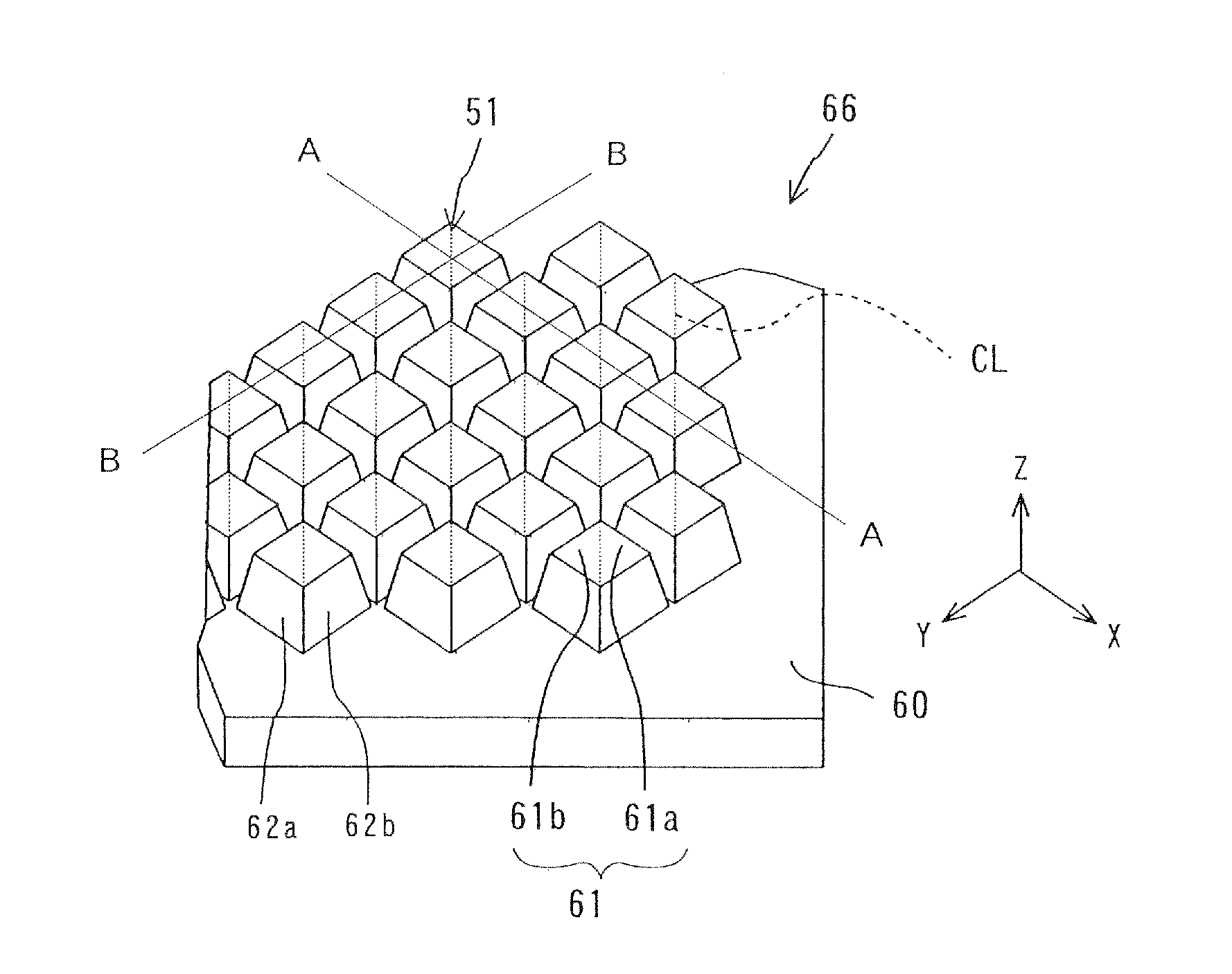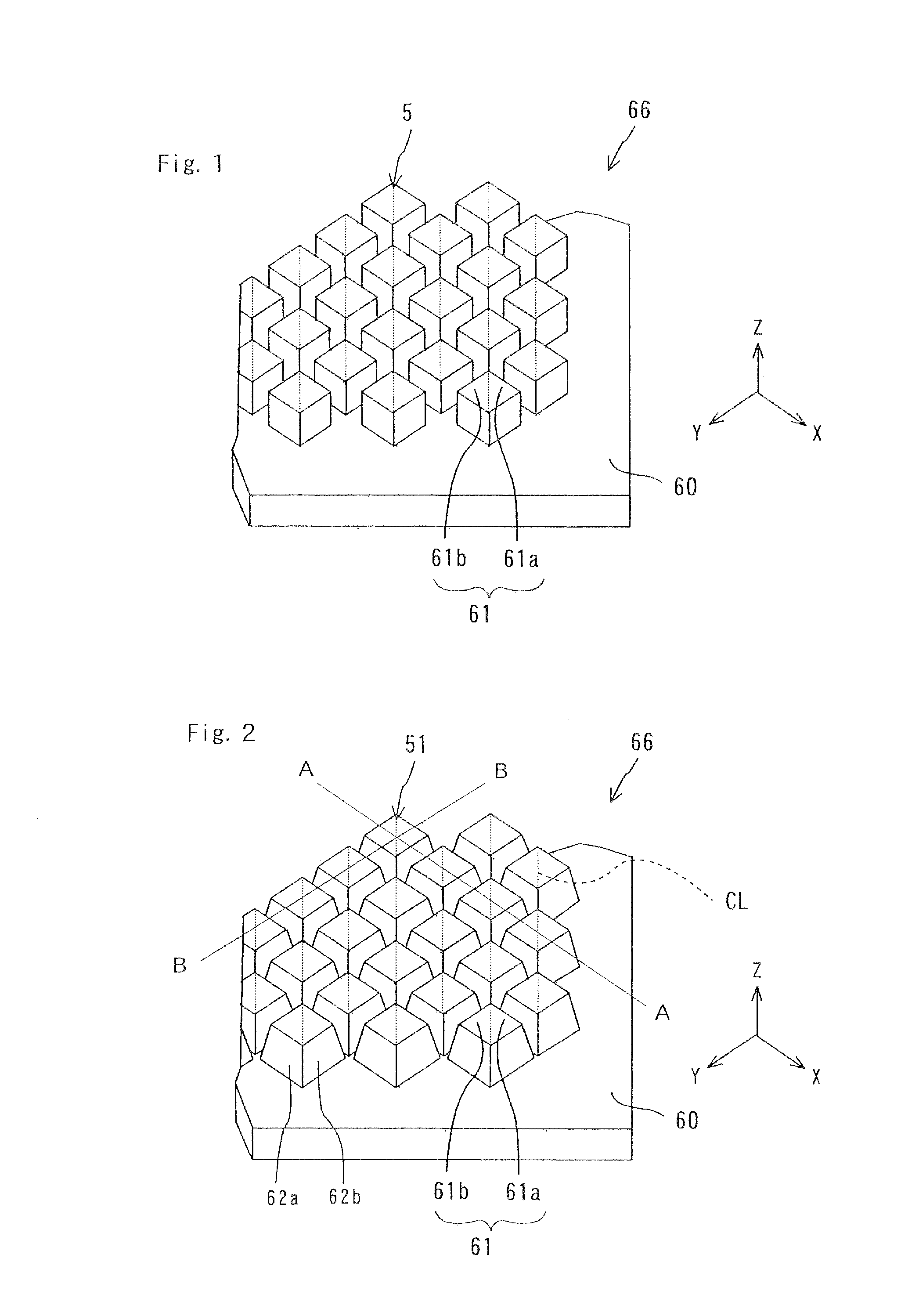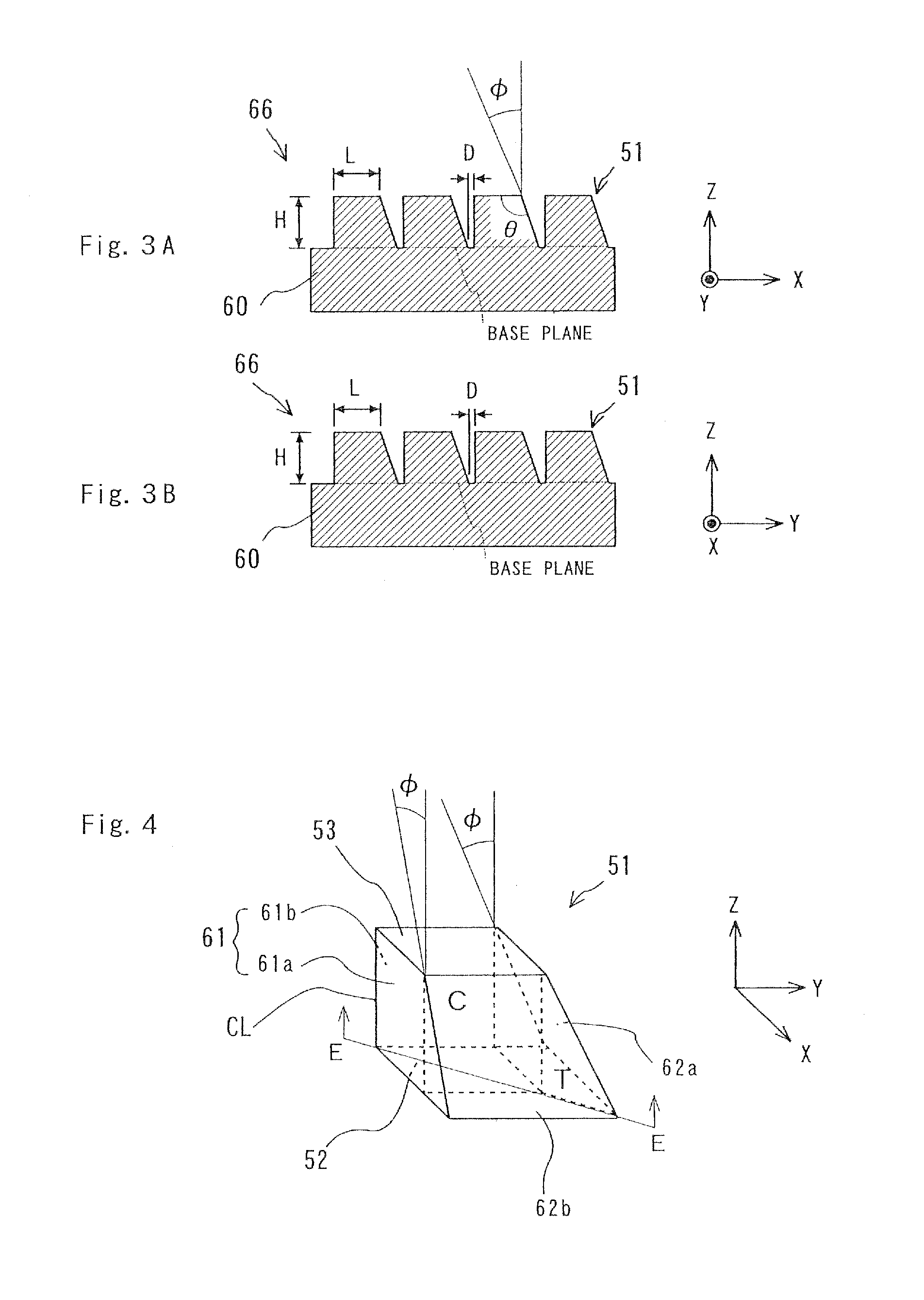Dihedral corner reflector array optical element and method for fabricating the same and display device using the same
a technology of dihedral corner reflector and array optical element, which is applied in the field of dihedral corner reflector array optical element, can solve the problems of difficult removal of molded optical element from stamper, and achieve the effect of reducing the scratch damage of dihedral corner reflector and preventing the reduction of scratch damag
- Summary
- Abstract
- Description
- Claims
- Application Information
AI Technical Summary
Benefits of technology
Problems solved by technology
Method used
Image
Examples
example 1
[0067]There is described as Example 1 in which, in order to improve the transferability of a molding operation, a molten resin is injected into a cavity of the molding die while the stamper (first molding die) is kept at a temperature of higher than a predetermined temperature, and then the molding die is cooled at another temperature less than the predetermined temperature after the cavity filled resin, so that a formed dihedral corner reflector array optical element is parted from the first second molding dies.
[0068]First, as shown in FIG. 8A, the predetermined stamper 101 and the second molding die 102 having a flat face are clamped to be contact directly with each other, and kept the molding dies at a temperature of higher than a softening temperature of a resin (for example 200° C., since a softening temperature of acrylic resin is about 100° C.) by heating it. There are embedded in the stamper 101 used in the example both of a heating device SH to heat the stamper and a coolin...
example 2
[0080]There is described as Example 2 in which, in order to improve the mold releasability, the molding apparatus is operated so that at least of one of the second molding die 102 and the stamper 101 is moved relatively in the parting direction R, and then a formed dihedral corner reflector array optical element is parted from the first second molding dies.
[0081]First, as shown in FIG. 13A, the predetermined stamper 101 and the second molding die 102 having a flat face are clamped to be contact directly with each other, and then theses are heated up to a temperature of higher than a softening temperature of a resin to be injected (for example 200° C. for use of acrylic resin).
[0082]Then, as shown in FIG. 13B, a molten resin 104 is injected through a molding die gate portion 103 into a cavity between the stamper 101 and the second molding die 102 with a high pressure.
[0083]Then, as shown in FIG. 13C, after injection of the resin 104, the stamper 101 and the second molding die 102 dir...
example 3
[0088]Regarding the manner shown in FIG. 13, there may be a problem that the relative movement of the second molding die 102 or the stamper 101 in the foregoing parting direction R is difficult on account of the molding apparatus. Commonly dies or stampers are allowed to move in the direction perpendicular to the reference surface of the molding apparatus. To such a problem, we provide a solution that the stamper and die are configured so as to be inclined with a predetermined angle to the reference surface. For the purpose of inclined settings of the stamper and die with the predetermined angle, a metal block part 102a and an auxiliary metal die 101a are provided to incline and fix the second molding die 102 and the stamper 101 at the predetermined angle to the reference surface of the molding apparatus. Specially, the metal block part 102a and the auxiliary metal die 101a are metallic blocks each having complementary flat surfaces inclined at a predetermined angle (12.3°) with res...
PUM
| Property | Measurement | Unit |
|---|---|---|
| taper angle | aaaaa | aaaaa |
| taper angle | aaaaa | aaaaa |
| depth | aaaaa | aaaaa |
Abstract
Description
Claims
Application Information
 Login to View More
Login to View More - R&D
- Intellectual Property
- Life Sciences
- Materials
- Tech Scout
- Unparalleled Data Quality
- Higher Quality Content
- 60% Fewer Hallucinations
Browse by: Latest US Patents, China's latest patents, Technical Efficacy Thesaurus, Application Domain, Technology Topic, Popular Technical Reports.
© 2025 PatSnap. All rights reserved.Legal|Privacy policy|Modern Slavery Act Transparency Statement|Sitemap|About US| Contact US: help@patsnap.com



